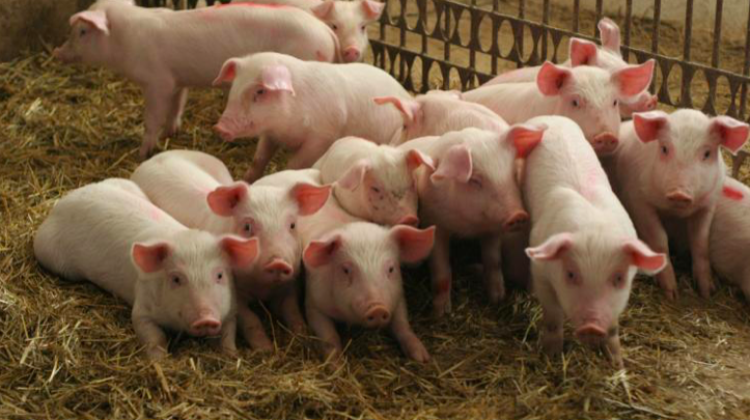Scientists will support pig farmers

Polish researcher analyses the genomes of thousands of pigs, obtained from an international swine genetics company. She is looking for a gene that will ensure that sows always give birth to the same number of piglets. Knowledge on this subject will allow to maintain balance between farm productivity and the capabilities of animals.
As part of a National Science Centre grant, Dr. Ewa Sell-Kubiak from the University of Life Sciences in Poznań is working on identification of the regions in the pig genome that determine that some animals have large litters and others give birth to less piglets. Such variations are very unfavourable for breeders and negatively affect animal welfare.
"The more piglets are born in one litter, the greater the risk that these animals will not survive" - explains the geneticist. "A pregnant pig is unable to provide enough space and nutrients for more than a about dozen piglets to grow in its uterus".
BREEDERS IN A CORNER
Dr. Ewa Sell-Kubiak explains that an intensive selection focused on high production has led to pigs giving birth to as many as 25 piglets. On farms, animals are reproduced by artificial insemination. At the moment of insemination, a lot of embryos are formed that nest in the pig`s womb. Embryos from the largest pregnancies do not have enough room to develop into healthy piglets. In these large litters, piglets born alive are usually about half of the entire litter.
"This is a huge problem. On the one hand, we want a large litter, because every piglet means profit for the farmer. On the other hand, when piglets are still born, there are losses resulting from the decreased welfare of pigs and piglets. Our task (the task of geneticists - ed.) is to find balance between the economic benefit of the breeder and the number of piglets in the litter that the pig is able to give birth to and then sustain during lactation" - the researcher explains.
The conclusion from the observations conducted by breeders and researchers is that the maximum litter size, which is a compromise between economy and biology, is 16 piglets. A piglet that weighs 1 to 1.2 kilos can survive from the moment of birth until weaning (when it stops taking mother`s milk). Dr. Sell-Kubiak emphasizes that when calculating the optimal litter size, one must also take into account the number of nipples the pig has. She does not deal with this issue herself, but other research institutes are working on the selection of individuals more efficient in this respect. It is important that a sow that gives birth to a large number of piglets should be able to sustain them afterwards.
TRACKING THE GENE
On traditional rural farms, pigs also give birth to a dozen piglets. The geneticist says that this is not a deviation from nature - on the contrary, large pregnancies also occur in wild pigs. In all these animals, if at least six embryos are not implanted in the uterus after fertilization, the pregnancy will end prematurely. Pigs have a natural predisposition to large litters.
Dr. Sell-Kubiak conducts basic research: the researcher is looking for a gene that will ensure a fixed number of piglets in each litter. If such a gene can be found, further research will serve application purposes.
Why is it necessary to reduce the variation in the number of piglets in a litter? "In Western Europe, human work is expensive. The goal of selection is that the sow should take care of piglets from birth to weaning. In Poland and in countries such as the United States, where it is easier find cheaper labour, smaller piglets from large litters are transferred to other sows that can feed them. But these issues are directly associated with breeding methods in individual countries" - notes the researcher.
The scientist conducts her research project at the Faculty of Veterinary Medicine and Animal Science of the University of Life Sciences in Poznań, at the Department of Genetics and Animal Breeding. Ewa Sell-Kubiak completed her PhD at Wageningen University in the Netherlands. At that time, she worked with Topigs Norsvin, a swine genetics company that now makes data about the genomes of many thousands of animals available to her. "I would not be able to obtain such information by other means, because it would cost a few or maybe several million euros to commercially generate genotypes. Thanks to cooperation between Wageningen University and the industry, I can conduct very innovative research" - says the scientist.
After returning from the Netherlands, the researcher transferred this cooperation to Poland. Recent publications related to her PhD included promising research results, which is why the National Science Centre decided to fund another large project by Dr. Sell-Kubiak. She still cooperates with the Dutch, but continues her research work in Poznań. The expert emphasizes that nobody has ever looked so comprehensively and specifically for these genes related to litter size variation. Currently, the researcher employs a doctoral student to help her analyse huge databases.
PAP - Science in Poland, Karolina Duszczyk
kol/ zan/ kap/
tr. RL
Przed dodaniem komentarza prosimy o zapoznanie z Regulaminem forum serwisu Nauka w Polsce.















